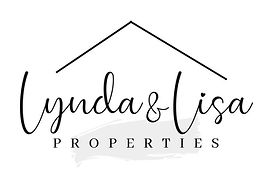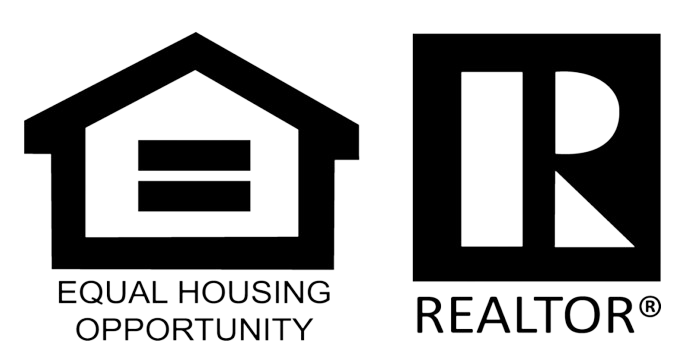Understanding the full financial commitment of buying a home goes well beyond the initial purchase price. Prospective homebuyers must prepare for additional expenses that significantly impact their budget and financial planning. This guide aims to shed light on these essential expenses, providing a clearer picture of the true cost of homeownership and helping buyers make informed decisions.

Earnest Money Deposit Explained
Making an earnest money deposit is one of the first financial steps on the path to homeownership. This deposit is a tangible commitment from the buyer to the seller, demonstrating their serious interest in the property. Typically, this amount ranges from 1% to 3% of the home’s purchase price, though this can vary based on local market conditions and negotiations between the parties involved.
An earnest money deposit is held in an escrow account by a neutral third party, such as a real estate brokerage, legal firm, or title company, until the transaction’s closing. This protective measure ensures that the buyer’s and seller’s interests are safeguarded. Should the sale proceed smoothly to closing, the earnest money is applied to the buyer’s down payment and closing costs, effectively integrating this initial investment into the broader financial transaction of purchasing the home.
However, it’s crucial for buyers to understand the conditions under which their earnest money can be forfeited. Typically, purchase agreements include contingencies—conditions that must be met for the sale to proceed, such as satisfactory home inspections, the buyer securing financing, and the home appraising for a minimum specified amount. If the buyer backs out of the deal for reasons not covered by contingencies, the seller may retain the earnest money as compensation for the time the property was off the market.
Conversely, if all contingencies are met and the buyer proceeds with the purchase, or if the seller breaches the contract, the earnest money is returned to the buyer or applied towards the purchase as planned. This system underscores the importance of earnest money in real estate transactions, emphasizing its role as a symbol of the buyer’s commitment and a fundamental element of the purchasing process.
Understanding the Down Payment
A cornerstone of the home buying process, the down payment represents a significant portion of the purchase price buyers must pay upfront. This payment is critical as a demonstration of the buyer’s commitment to the lender and determining the mortgage terms. The down payment size can significantly impact the buyer’s monthly payments, interest rates, and whether they must pay for private mortgage insurance (PMI).
Typically, lenders require a down payment of at least 20% of the home’s purchase price to avoid PMI, a policy that protects the lender if the buyer defaults on the loan. However, saving up to 20% can be daunting for many buyers, especially first-timers. Recognizing this, various mortgage programs offer the option to put down as little as 3-5%, making homeownership more accessible, albeit with the added cost of PMI until the borrower has enough equity in the home.
The down payment affects the loan-to-value ratio (LTV), a key factor lenders use to assess risk. A lower LTV (meaning a larger down payment) indicates less risk, potentially qualifying the buyer for better loan terms. Furthermore, a substantial down payment can reduce the total interest paid over the life of the loan and lower monthly mortgage payments, providing long-term financial benefits.
Buyers should also consider how the size of their down payment affects their overall financial stability. While a larger down payment can offer immediate benefits, depleting savings can leave buyers vulnerable to unexpected expenses. Therefore, balancing the desire to minimize borrowing costs with the need to maintain an emergency fund is essential.
In conclusion, the down payment is a pivotal element of the home-buying process, influencing both the immediate affordability of a home and the buyer’s long-term financial health. Understanding and planning for this expense is crucial in making an informed, financially sound decision when purchasing a home.
Navigating Closing Costs
Closing costs are the array of fees and expenses buyers and sellers incur to finalize a real estate transaction. For buyers, these costs cover the services necessary to purchase a home and secure a mortgage. Typically ranging from 2% to 5% of the home’s purchase price, closing costs can significantly impact the total amount needed to finalize the purchase.
Key components of closing costs include loan origination fees, appraisal fees, title searches, title insurance, surveys, taxes, and recording fees. Loan origination fees compensate the lender for processing the new loan. Appraisal fees cover the cost of a professional appraiser evaluating the home to ensure its value matches the sale price and loan amount. Title searches and title insurance protect against potential ownership claims or liens against the property, ensuring the buyer receives a clear title.
Moreover, some costs are prepaid expenses, such as homeowners’ insurance, property taxes, and possibly private mortgage insurance for the first year. Lenders often require these prepayments to protect the buyer’s investment from unforeseen events and liabilities.
Understanding and planning for closing costs are crucial for buyers. Lenders must provide a Loan Estimate form early in the application process, detailing expected costs, and a Closing Disclosure form at least three business days before closing, outlining the final costs. Buyers should review these documents carefully, comparing the estimated and final costs and discussing any discrepancies or unexpected fees with their lender.
While closing costs can be daunting, buyers may negotiate with the seller to cover a portion of these expenses, commonly called seller concessions. Additionally, some lenders offer programs that assist with closing costs, and there are also government programs for first-time homebuyers that can help reduce the financial burden.
In summary, closing costs are a significant aspect of the home-buying process, requiring careful consideration and planning. By understanding these costs, buyers can better prepare for the financial requirements of purchasing a home, ensuring a smoother transition to homeownership.
Additional Homeownership Costs Beyond the Mortgage
Owning a home entails various financial commitments beyond the principal and interest payments of a mortgage. Understanding these additional costs is vital for budgeting accurately and maintaining financial stability as a homeowner. Key expenses include property taxes, homeowners’ association (HOA) fees, and common utilities, each playing a significant role in the overall cost of homeownership.
Property Taxes: An essential expense for homeowners, property taxes are levied by local governments to fund public services and infrastructure projects. The amount is based on the assessed value of the property and the local tax rate, which can vary widely depending on the area. While some homeowners opt to pay these taxes in lump sums, many incorporate them into their monthly mortgage payments through an escrow account, smoothing out the financial impact over the year.
Homeowners Association (HOA) Fees: For properties within managed communities, such as condominiums or planned neighborhoods, HOA fees are a common expense. These fees cover the maintenance of shared spaces, amenities like pools and community centers, and sometimes even certain utilities or services. The cost can range from a modest monthly amount to significant dues, depending on the level of amenities and services provided.
Common Utilities: Monthly utility costs are a staple of homeownership, encompassing services like electricity, water, gas, sewage, and trash collection. These expenses vary based on usage, the size of the home, efficiency measures in place, and regional pricing. Additionally, most homeowners will need to budget for internet and cable services, which have become household essentials.
Planning for these expenses is crucial for a realistic view of homeownership costs. Factoring in property taxes, HOA fees, and utilities alongside mortgage payments allows homeowners to gauge their total monthly expenditure accurately. By anticipating these costs, homeowners can ensure they’re financially prepared for the full scope of owning and maintaining a home, avoiding surprises, and securing their investment for the future.
Essentials That Might Not Come with Your New Home
Moving into a new home can be filled with surprises, especially when it comes to what’s included in the sale. Many buyers assume certain fixtures, appliances, and features will automatically come with the property, only to discover they need to budget for these essentials separately. Understanding what typically stays, what goes, and what you might need to negotiate on can prevent unexpected expenses and disappointments.
Appliances: While built-in appliances often stay with the home, freestanding items like refrigerators, washers, and dryers are not always included. Sellers may choose to take these with them, particularly if they’re high-end or new. The purchase agreement should explicitly state if you’re keen on keeping the existing appliances.
Window Treatments: Curtains and blinds can be another gray area. Custom window treatments might be considered personal property and taken by the sellers unless otherwise agreed upon. However, built-in blinds or shutters are usually considered part of the home. Clarify which window treatments will remain, as replacing them can be costly.
Light Fixtures and Hardware: Don’t assume that all light fixtures or custom hardware will remain in the house. Sometimes, sellers have sentimental attachments or preferences for certain pieces and plan to replace them with more standard options before they leave. If you’re enamored with a specific chandelier or custom door knobs, make sure their inclusion is negotiated into the contract.
Outdoor Features: Items like garden sheds, hot tubs, and even certain landscaping elements can be up for negotiation. Portable sheds and hot tubs might be considered personal property by the seller, while you might assume they’re fixed assets of the home. Ensure clarity on what stays, particularly with items that contribute significant value or appeal to the property.
Security Systems and Smart Home Devices: With the rise of smart home technology, items like thermostats, security cameras, and smart locks are increasingly common in homes. These items may not be included in the sale, especially if the seller is committed to a particular system or service. Buyers interested in retaining these features should confirm their inclusion or be prepared to invest in their own systems.
To avoid misunderstandings and ensure a smooth transition into your new home, it’s crucial to have clear, written agreements about what is included in the sale. This can involve direct negotiation with the seller and adjustments to the purchase contract to specify which items remain. A thorough walk-through before closing can help verify that all agreed-upon items are in place, allowing for any necessary adjustments or negotiations before finalizing the sale. Understanding that the perfect home might not come fully equipped with all you envisioned is key to budgeting effectively and making your new house feel like home.
Stocking Up on Home Essentials
Transitioning into a new home involves more than just securing the property; it also means equipping it with the necessities that transform a house into a comfortable living space. Beyond the visible aspects of furniture and appliances, numerous smaller essentials are crucial in day-to-day comfort and functionality. Ensuring you have a well-stocked home from the start can make the move smoother and your new environment more welcoming.
Kitchen Supplies: The heart of the home, the kitchen, requires a variety of utensils, cookware, dishes, and glasses to fully serve its purpose. Start with the basics: a set of pots and pans, baking sheets, a knife set, cutting boards, and mixing bowls. Don’t forget the smaller items like can openers, spatulas, measuring cups, and dish towels. These essentials make it possible to prepare meals and entertain guests right from the start.
Bedding and Towels: Comfortable, quality bedding and towels are key to creating a cozy, inviting home. Begin with at least a couple of sets of sheets and duvet covers or comforters for each bed, allowing for changes and washing. Similarly, stock up on bath towels, hand towels, and washcloths to ensure you have plenty available for both personal use and guests.
Cleaning Supplies: Keeping your home clean and tidy requires a collection of cleaning agents and tools. A vacuum cleaner, mop, broom, and dustpan are fundamental for maintaining floors. Additionally, gather a variety of cleaning solutions for different surfaces, including glass cleaner, disinfectant, and bathroom cleaner. Sponges, scrub brushes, and microfiber cloths are essential for various cleaning tasks.
Personal Items: Personal care items should also be on your initial shopping list. This includes toiletries such as toilet paper, soap, shampoo, and toothpaste, as well as a first-aid kit for any minor emergencies.
Miscellaneous Supplies: Remember to include other miscellaneous items that make life easier, such as laundry detergent, trash bags, light bulbs, batteries, and extension cords. These items might not be the first you think of, but they’re crucial for the functionality and maintenance of your home.
Preparing your new home with these essentials ensures that you’re ready for daily living and any surprises that come your way. While it might seem like a substantial initial outlay, having these items on hand will save you time and stress, allowing you to focus on settling into your new surroundings and making it truly yours.
Moving Expenses
Transitioning to a new home involves more than just packing boxes; it also encompasses a range of moving expenses that can quickly add up. From hiring professional movers to securing packing materials, each aspect of the move requires careful financial planning. Professional moving services vary widely in cost, influenced by the distance of the move, the volume of belongings, and any additional services such as packing and unpacking. For those considering a do-it-yourself approach, renting a moving truck and purchasing packing supplies like boxes, tape, and bubble wrap are essential costs. Additionally, moving isn’t just about transporting belongings; it often includes travel expenses for yourself and your family, such as meals, lodging, and gas, if moving to a distant location.
Utility setup fees are another consideration. Transferring or initiating services like electricity, water, internet, and cable can incur charges, which, while individually small, can accumulate. Furthermore, it’s wise to budget for immediate post-move necessities, such as restocking pantry essentials and household items that were not practical to move or were discarded before the move.
To manage moving expenses effectively, obtaining quotes from several moving companies for comparison or accurately estimating the rental and fuel costs for a DIY move is crucial. Setting aside a specific budget for moving can help contain costs and prioritize spending on services and items truly needed. Planning for unexpected expenses, such as last-minute packing supplies or minor repairs at the new home, can also prevent financial strain during this busy transition period.
In summary, moving involves a variety of costs, from professional movers or truck rentals to utility setups and immediate post-move needs. By anticipating these expenses and planning accordingly, you can ensure a smoother transition to your new home without unnecessary financial stress.
Establishing a Home Maintenance and Emergency Fund
Establishing a dedicated fund for home maintenance and emergencies is a critical strategy for homeowners aiming to preserve their property’s condition and value while ensuring financial stability. Experts recommend allocating 1% to 2% of your home’s purchase price annually for regular upkeep tasks such as HVAC servicing, roof inspections, and landscaping. For a home costing $300,000, this translates to setting aside $3,000 to $6,000 each year, or about $250 to $500 monthly. In parallel, creating an emergency fund to cover unforeseen and urgent repairs, like a broken furnace or a leaking roof, is equally important. An ideal emergency fund contains 3 to 6 months’ worth of living expenses, offering a safety net for both home-related issues and other unexpected life events.
Starting these funds involves examining your budget to identify how much you can afford to save each month, prioritizing these savings if you’re a new homeowner. Opening separate savings accounts for maintenance and emergency purposes can help manage these funds effectively, preventing misuse of every day or non-essential expenses. If saving large amounts monthly is daunting, begin with smaller contributions and gradually increase them as your financial situation allows. This approach ensures you build a substantial reserve over time, ready to address both routine maintenance and sudden emergencies without resorting to high-interest loans or compromising other savings goals.
By diligently saving for home maintenance and emergencies, homeowners can mitigate the stress of unexpected repairs and maintain their home’s safety and aesthetics, all while safeguarding their financial well-being. This proactive financial planning fosters a sense of security, knowing that you’re prepared to confidently handle the challenges and responsibilities of homeownership.
Ready to Make Your Move?
Embarking on the journey to homeownership is exciting and complex, filled with considerations beyond finding the perfect property. From understanding the nuances of earnest money deposits to navigating closing costs and budgeting for ongoing homeownership expenses, there’s much to consider. As you’ve seen, being well-informed about the process and prepared for the financial commitments involved is crucial to a successful and stress-free home-buying experience.
When you’re ready to take the next step toward finding your dream home, We are here to guide you through every aspect of the process. With our expertise in the local market and a commitment to personalized service, I’ll help you navigate the intricacies of buying a home, ensuring you’re informed and confident in your decisions. Contact us today to begin your path to homeownership with a trusted partner by your side.


